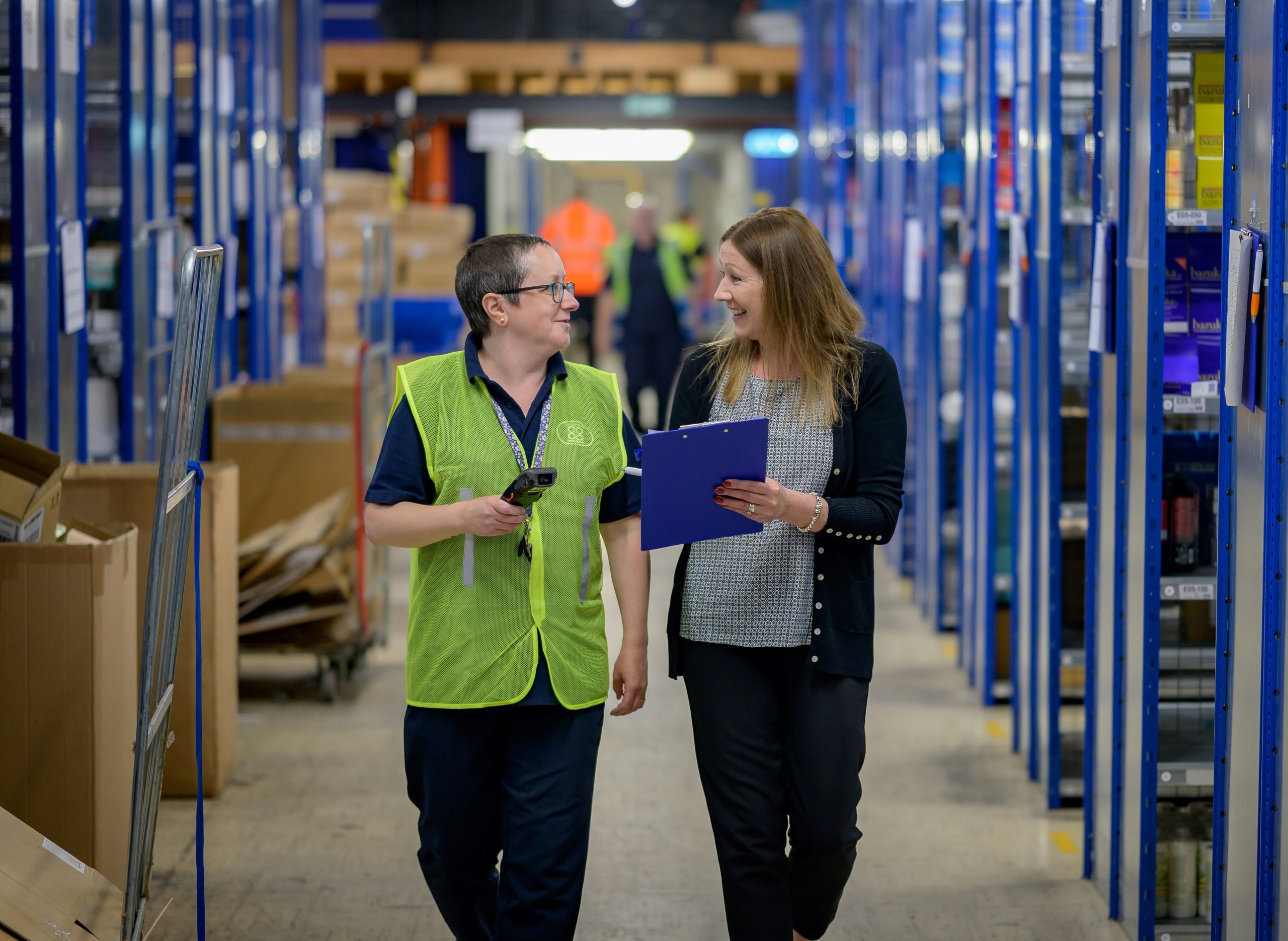“Smooth sailing” isn’t a phrase just for the open ocean. A smoothly-run, efficient manufacturing plant can bring you quite an array of benefits, including higher production rates, reduced expenses, and lower employee turnover. If you’re looking for ways to make your small business more productive, here are a few manufacturing productivity tips that can help drive your profits to new heights.
Get Organized
Every second that you and/or your employees spend stumbling over cords, searching for tools, or placing orders for items that are already on hand—somewhere—is a second of productivity that has been lost. You can save time and money by investing in organization of your facility. That means ensuring that every item has an easy-to-access, labeled place where it belongs. If you struggle with organization, or simply don’t have the time for it, you might want to contract a professional organizer to help bring your facility into line. You can also check out our handy, step-by-step guide to organizing your workspace here.
Make Safety a Priority
If your manufacturing facility is not a safe one, you risk being sued by OSHA, individual employees, or both. Addressing the situation (and retraining/replacing injured employees) costs you time and money. Therefore, it is important to ensure your facility is as safe as possible. Provide standard PPE—like earplugs, safety glasses, and breathing masks—whenever possible, and make sure you have adequate ventilation. Keep aisles and walkways clear and clutter-free, and outline low-visibility areas in bright safety tape. Finally, make sure that every employee—even administrative assistants—has adequate safety training, and knows where to find fire extinguishers, first aid kits, and other essential safety items.
Schedule Regular Repairs
If your equipment breaks down unexpectedly, your shop and employees will have to sit idle while repairs are being made. Therefore, be sure to schedule preventative maintenance inspections and tune-ups at consistent intervals throughout the year. Most equipment manufacturers recommend a minimum of two maintenance inspections per year. However, if your shop is extremely high-volume, four times a year might be preferable. Make sure your maintenance technician inspects every part of each machine for signs of wear and tear, and replaces consumables like hydraulic fluids.
Have Spare Parts on Site
Unfortunately, even the most well-maintained machines have a risk of breaking down. Therefore, it’s a good idea to keep multiple spares of replaceable parts in your facility. If a certain machine is absolutely essential, and if your space and budget allows, you might even consider having a backup of it somewhere on site. Make sure to store backup machines and parts in an accessible, easy-to-find area. Store a repair or replacement manual along with the parts, so your employees can quickly switch gears in an emergency.
Consider Your Shipping Carriers
If you distribute the items you produce, you may be able to reduce expenses by reconsidering your shipping carrier. FedEx, USPS, and UPS all have different rate options depending on distance traveled, item dimensions, item weight, and other factors. If you are distributing thousands of items per year, it’s highly worth the time to compare and contrast each carrier and its associated costs. If you don’t want to compare different rates by hand, you might invest in an online software that can determine the cheapest rate for you. Once you’ve chosen a carrier, try to maintain a good relationship with your account manager, as this can open up doors to discounts.
Have Everything You Need
Again, every moment your employees spend searching for something (or worse, rigging up their own DIY tool) is a moment of profitability that is lost. Make sure you have all the materials you need to function efficiently, like tape, scissors, box cutters, and boxes. You might also investigate simple items that can make certain tasks easier. For example, an automatic labeler can prevent employees from having to apply hundreds of shipping labels to boxes manually. You can also buy your own impulse sealers, air cushion machines, barcode printers, industrial palette wrap, and more.
Identify and Remove Potential Bottlenecks
Since every step in your production process is a potential point of risk, it makes sense to bring as many processes in-house as possible. The fewer outside companies you have to rely on, the more control you can have over your production process from start to finish. If it’s just not possible for you to bring every aspect of your production in-house, your next best option is to utilize local suppliers whenever possible. More and more economists are advocating for a “near-sourcing” model, wherein manufacturers source materials and labor close to the market in which it is sold. This helps you keep greater control over your production process, and makes your business less vulnerable to risks that threaten international locations, like tsunamis, floods, and civil unrest.
Invest in Employee Training
Having a robust employee training program benefits your business in several ways. Firstly, it ensures that team members can continue to handle the latest technology and equipment. It also keeps them up-to-date on company procedures, attendance policies, and safety guidelines, all of which will help boost productivity. As an added bonus, when you invest in your employees, they are more likely to stay engaged and productive, and are less likely to leave for other opportunities. This helps your business stay efficient and reduces the expenses of rehiring and retraining new employees.
Improve Your Manufacturing Efficiency with SSI!
If you’re looking for more manufacturing productivity tips, consider speaking to SSI’s experts. Based in Richmond, Virginia, we offer everything small business owners need to pack and track their image. From labeling machines, to industrial printers, to everyday packing materials, we have it all! To learn more about how we can help you optimize your business, contact us here.

